The Project Begins
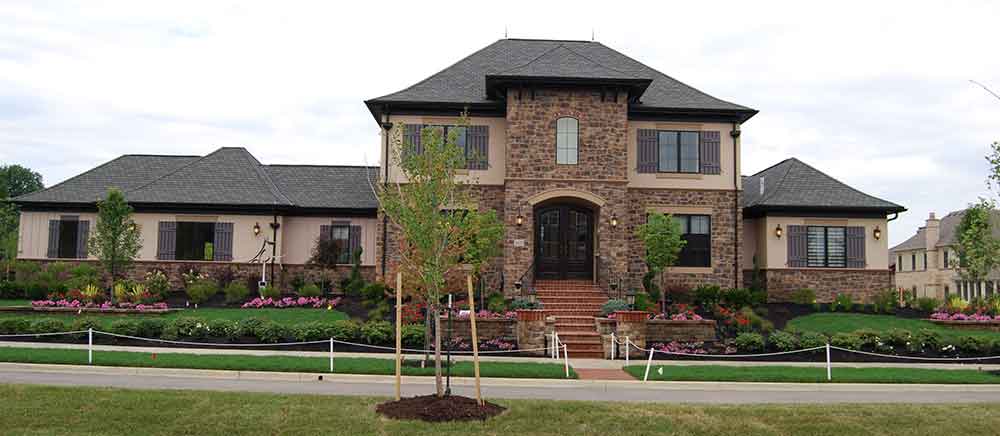
Jenny Frederick, of Spice It Up Interiors, originally met with me to discuss the Dani Homes’ energy.
She had approval from the owner, Nilay Bhatt, to proceed so I performed an analysis on the building which was already under roof.
A brief explanation of how classic (also called traditional) Feng Shui works will help set the stage.
Just as each building has its own unique energy, each section (also called direction or quadrant) of a structure does as well. It’s the energy of that section that determines how people experience the space. If good energy, people benefit; if challenging energy, problems can surface. Classic Feng Shui provides a glimpse into the past, present, and potential. In this case, we were focusing on the present (for the Parade of Homes) and potential (for homeowners and their families).
Each quadrant represents different family members, body parts, and functions of life. Examples of this: NW represents the head male and receiving the support we need to be successful in life; SW represents the head female and marriage; East represents the eldest son and energy; SE represents the eldest daughter and respiration; South represents heart and circulation; North represents blood and regeneration; and so on. There is no “wealth” corner as some forms of Feng Shui profess because all areas affect financial health. There isn’t a “love” area because all areas represent family members.
Classic Feng Shui doesn’t segregate areas but works holistically. That’s why I say Feng Shui should be felt not seen.
A person should not enter a home and say, “Oh, you’ve done Feng Shui,” because of obvious statues, trinkets, or colors of rooms (or corners).
The implementation of Feng Shui should be tasteful and elegant.
Whether the homeowner likes contemporary, traditional, or another style of decorating … that shouldn’t change. Introducing artifacts that don’t match the style isn’t good Feng Shui.
The analysis we do determines where there is balance or imbalance, and how to remedy imbalance or promote good energy.
Classic Feng Shui utilizes the five elements to determine what needs to be done or supported. The five elements entail fire, earth, metal, water, and wood.
- Fire involves the colors red, pink, or purple; candles, fireplaces, and lights; or pointed shapes.
- Earth is yellow, tan, or brown; flat or square shapes; or stone, ceramics, or brick.
- Metal entails the colors white, gray, or metallic/reflective colors; metal objects; or round or oval shapes.
- Water involves the colors blue or black; wavy patterns; or crystal or glass.
- Wood is the color green; tall objects or vertical stripes, and live or silk plants.
Once the action plan was determined, Jenny and I looked through color decks to determine an approach for each room. Many people think of Feng Shui as decorating. While that happens, Feng Shui is risk management. Jenny and I depend on each other. She is creative and has a savvy styling sense. My background is in risk management and Feng Shui so I act as a guide.
We continued to work through choices as the home revealed its needs (for example, paint colors on the color deck may not look the same in a room). The home’s personality (i.e., natural lighting) and members of our team also have an influence. That’s why I say Feng Shui is a journey, not a destination.
The Landscape and Feng Shui
Feng Shui starts with the land, then the building, then the people in the space.
As was mentioned above, Jenny initially brought me onto the project for suggestions regarding interior decorating. When Jenny, Nilay (from Dani Homes), and I met, Nilay shared the landscape plan designed by Rich Martin at Blendon Gardens. It’s beautiful, and I asked permission to evaluate it from a Feng Shui perspective.
That’s something I’ve learned over the years … don’t offer suggestions when they haven’t been requested. Along those same lines, I don’t walk into a home or office and start mentally critiquing it. To do so doesn’t honor the space or the people; besides, I need time off. So, Nilay welcomed the input and introduced me to Rich.
Rich and I scheduled a meeting to exchange ideas. He knows landscape design and I … well you know. It would turn into a meeting of like-minds (connecting with our surroundings, and in this case — nature)!
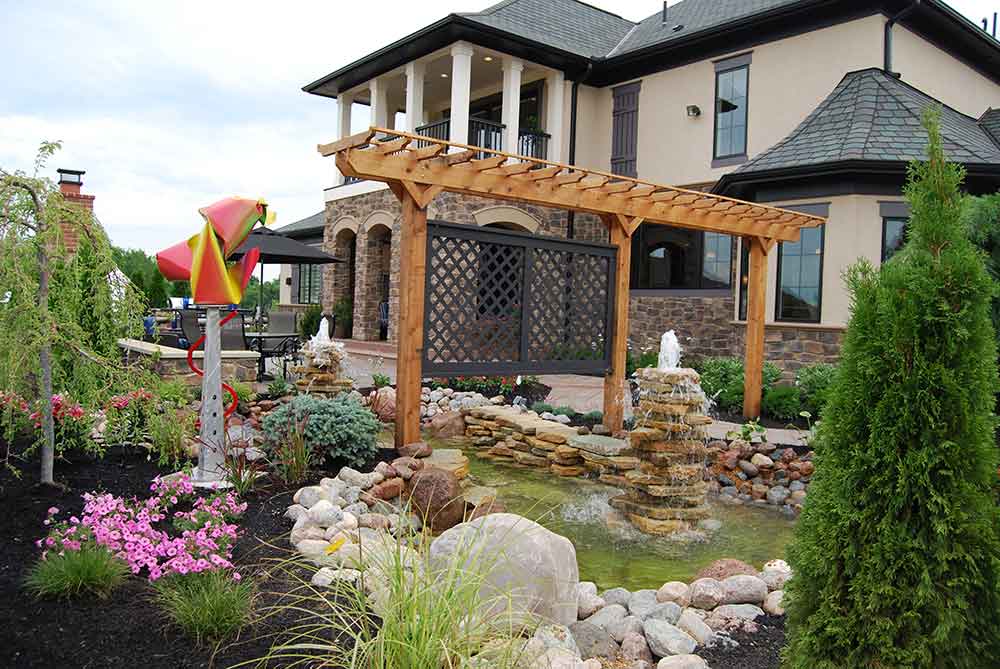
I found Rich to be (in addition to a skilled designer) an intuitive artist. His projects look like he studied Feng Shui, and many times people naturally tap into it. After all, Feng Shui follows the cycles of nature and is based on common sense. It should make sense. Who wants to change things for the sake of change itself … especially in this economy?
Rich placed the water pond in an ideal location. Feng Shui says water in front is desirable. However, the black-topped street acts as a river so more water in front isn’t necessarily a good thing. Due to the nature of the house (determined by mathematical calculations), this home was better served with water in the back. This raises the home’s energy; whereas in other homes, water in the back could be a detriment.
There’s not a one-size-fits-all (cookie cutter) approach with classic Feng Shui.
It really depends on the structure, when it is built, compass directions, and many other factors. Classic Feng Shui is customized and each building is unique. The location where Rich placed the pond creates a delight for anyone sitting in the breakfast area (shaped like a bagua, a Feng Shui shape like an octagon).
Too, it’s important for the pond’s water to flow toward a structure because this means prosperity for occupants. Rich has two stone fountains that distribute the water 360 degrees — so anyone enjoying the pond will also receive good energy.
He also placed a boulder in the SW corner of the house. This remedies a Feng Shui term called missing corner, and provides energy to the head female, the homeowner’s marriage, and supports love in general.
A tree line addresses a missing corner (and otherwise loss of energy) in the SE. The SE represents the eldest daughter and family in general.
Because the house’s back (sitting position) is in the West, it is called a soft metal or a Dui trigram (depending on the Feng Shui book, it can also be called Tui). Dui has a kua (or an energy number) of seven. Rich placed seven trees along the street.
The purpose of traditional Feng Shui is to minimize risk and maximize results.
There are many quantifiable benefits to living in a Feng Shui home or working in a Feng Shui building. Our clients have experienced exceptional results — anything from remission from an illness, to a $250m portfolio increase in six months.
One example of a benefit for the Dani Home (more will be revealed as the Parade nears) is for children–children who reside here will likely bring honor to their family so their contribution to the future will be well known. If I had young children, I’d want to live in this kind of home!
The Interior and Feng Shui
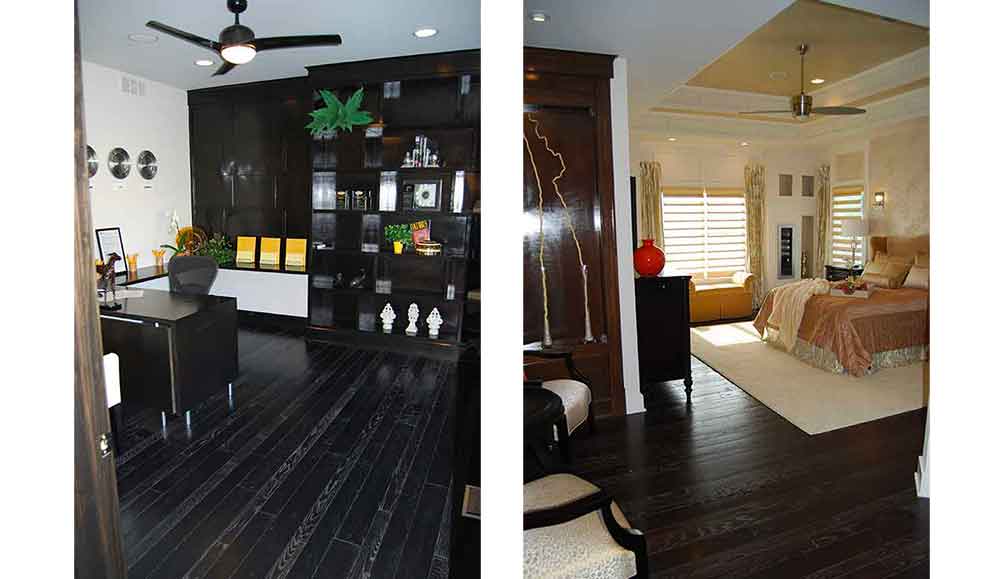
There are energy risk factors to manage for all buildings. The closest perfect building that I’ve encountered is 60%. The other 40% is addressed through landscaping and the interior.
In addition to this house being a good structure for children (who will bring honor to the family), occupants will be creative and attracted to the arts. There’s peach-blossom energy which means occupants will socialize frequently, and romance will be in the air. Occupants are also likely to accumulate more real estate so that could become an investment strategy.
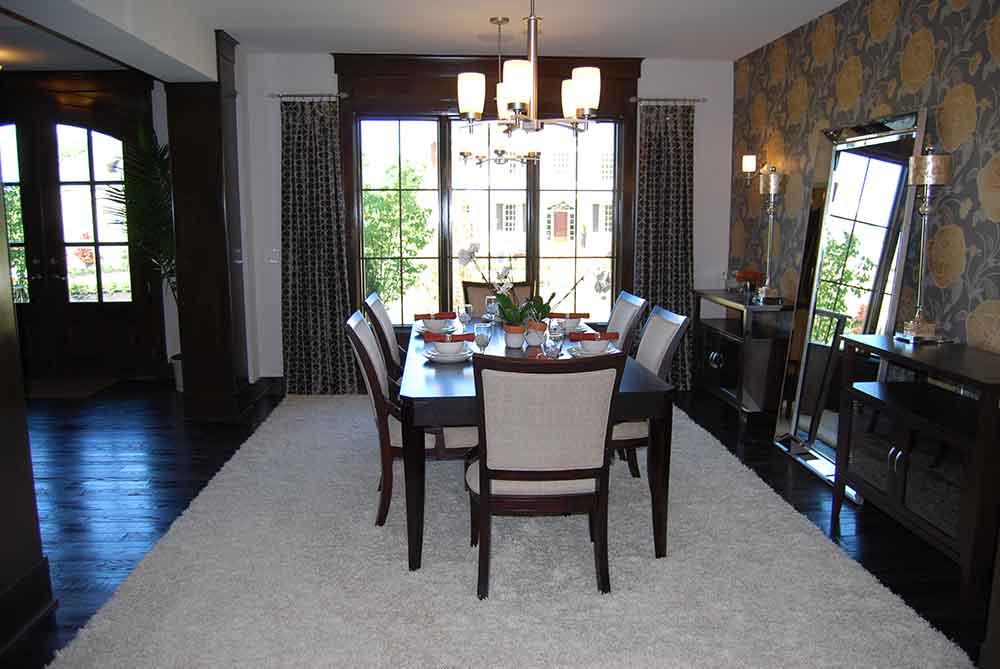
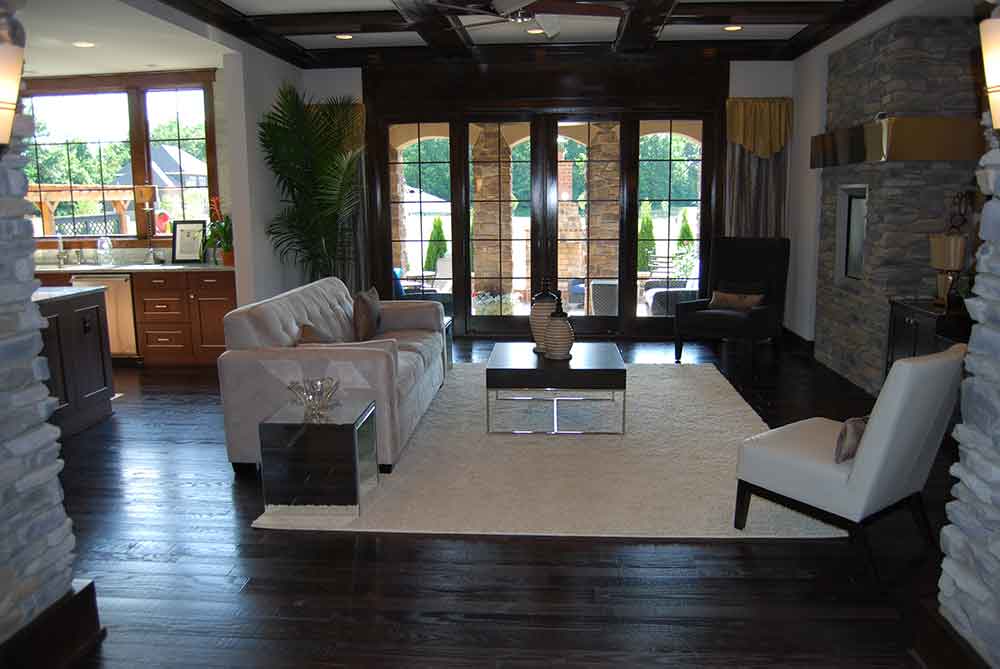
We selected specific paint colors for certain areas to reduce risk factors. Faux finishes were added as well. As an example, the media room has a lot of wood details. Straight lines are yang (or active energy) as is electronic equipment; so, to introduce more yin (or resting energy), circles were painted on the wall.
The great room has a state-of-the-art fireplace. The fireplace is stainless inserted into a stone wall. Metal and stone are both hard, or yang, surfaces. Again, to introduce a yin (or soft) influence, the fireplace bowl is round and has oval rocks in it.
There are several surprises deliberately placed: A water fountain, a metal sculpture, and an abstract clock. The latter two represent moving metal.
Additional Notes
The yin/yang concept was also carried to the outdoor living space. There are curved arches over the patio. The walkway in the back accentuates the bagua. A trellis in the back creates a sense of intimacy as one enters the outdoor living space.
This concept is at the front entrance as well with the curved stairs. They create a sense of ‘welcome here,’ as they’re more approachable than straight lines and 90-degree angles.
One of the many visitors to the house was a Feng Shui Master. She asked, “Where did you hide the Feng Shui?” I never did live that down – the team teased me frequently about this.
For a list of what was done on this project, click here: Feng Shui for 9429 Tartan Ridge.
To see the letter of recommendation from Dani Homes, click here: Dani Homes_Nilay Bhatt_Parade of Homes.
To see the o see the Columbus Dispatch article, click here: Parade of Homes Dispatch Article by Jim Weiker.
Again, good Feng Shui is felt not seen. Nothing should be obvious or jump out saying ‘I’m a Feng Shui cure/fix!’
Instead, it should be graceful and natural, and say ‘you’re welcome here.’
If you are interested in finding out more, schedule a residential consult today!
May you be exceedingly, generously, and joyfully blessed today.
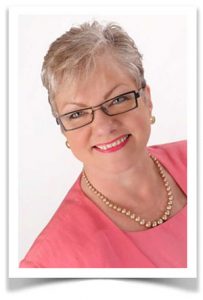
Diana Garber, Feng Shui Master
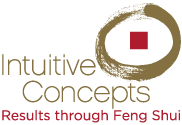
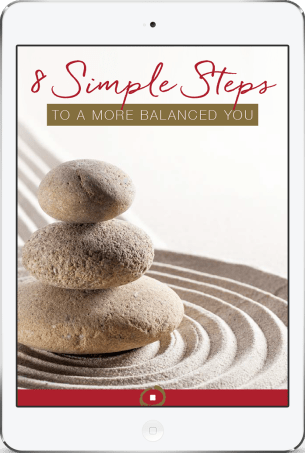
Leave A Comment